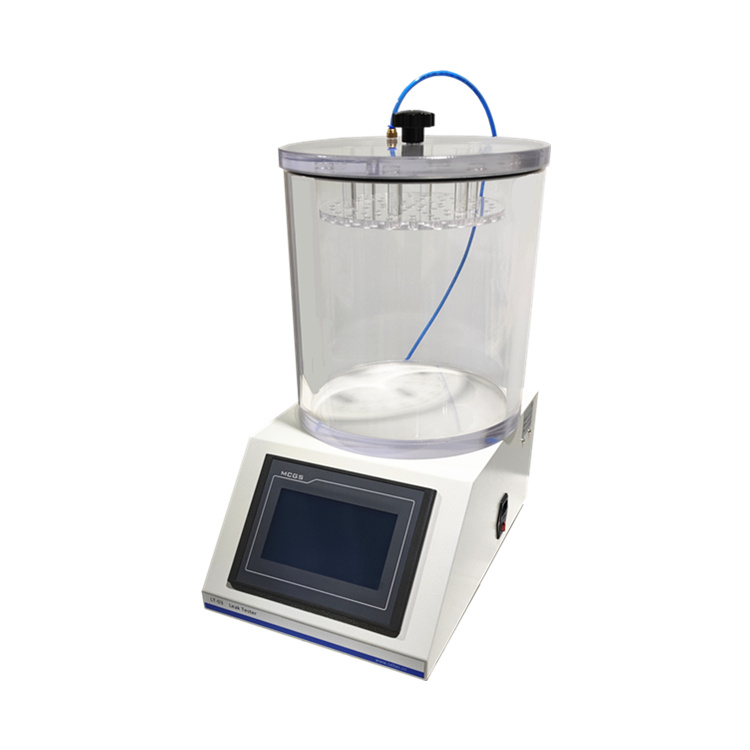Принцип испытания и технические характеристики прибора для проверки герметичности упаковки
Тестер герметичности упаковки также называется детектором герметичности упаковки. Это прибор, специально используемый производственными и перерабатывающими предприятиями для проверки герметичности упаковочных пакетов, бутылок, банок и других контейнеров в пищевой, молочной и фармацевтической промышленности, чтобы гарантировать, что продукт не протечет из-за упаковки. И производить проблемы с качеством (некоторые места утечки невидимы невооруженным глазом), продлевать срок годности продукта.
Метод испытания основан на «Методе испытания герметичности гибких упаковок GB/T15171-94».
Гибкая упаковка
Для гибкой упаковки с герметичными характеристиками используемые упаковочные материалы не должны иметь дефектов, влияющих на герметичность, таких как проколы, трещины, негерметичные и неплотные швы.
Эффективность уплотнения
Способность гибкой упаковки предотвращать проникновение других веществ или утечку содержимого.
Принцип теста
Метод первый
Этот метод применяется для упаковок, у которых эксплуатационные характеристики внешнего материала под воздействием воды не будут существенно снижены в ходе испытания, например, для упаковок с пластиковой пленкой в качестве внешнего слоя.
При откачке воздуха из вакуумной камеры образец, погруженный в воду, создает разницу давлений между внутренней и внешней средой и наблюдает за утечкой газа или проникновением воды в образец, чтобы определить герметичность образца.
Метод второй
Данный метод применяется для упаковок, у которых эксплуатационные характеристики внешнего материала значительно ухудшатся в течение периода испытаний под воздействием воды, например, для упаковок с внешним слоем из бумажного материала.
Тестовое устройство
Испытательная установка должна быть разделена на следующие части.
Вакуумная камера: состоит из вакуумного контейнера из прозрачного материала, выдерживающего давление 100 кПа, и герметичной крышки.
Вакуумный контейнер используется для хранения испытательной жидкости и испытательного образца; герметизирующая крышка используется для герметизации вакуумной камеры. При вакуумировании герметизирующая крышка должна обеспечивать герметичность вакуумной камеры.
В ходе испытания максимальная степень вакуума, которая может быть достигнута в вакуумной камере, не должна быть ниже 95 кПа, а степень вакуума может быть достигнута от нормального атмосферного давления в течение 30-60 с.
Крепление образца: используется для фиксации образца в испытательной жидкости в вакуумной камере, его материал и форма не должны влиять на характеристики образца и результаты испытания.
Трубопровод: включая вакуумную трубку, соединенную с источником вакуума, и выпускную трубку, соединенную с атмосферой. Оба должны быть оснащены клапанами.
Вакуумметр: используется для измерения степени вакуума в вакуумной камере, его точность должна быть не ниже 1,5 балла.
Устройство управления: включая вакуумный выключатель, устройство регулировки вакуума, впускной клапан и т. д.
Характеристики продукта
Процесс тестирования полностью автоматизирован.
Интерфейс «человек-машина», управление с помощью сенсорного экрана
Цифровая настройка степени вакуума и времени испытания
Автоматическое поддержание вакуума и выгрузка с обратной продувкой
Пять наборов настроек тестовых параметров
Автоматическая статистика и хранение результатов тестов
Сверхтолстое оргстекло для вакуумной камеры
Нестандартные размеры вакуумной камеры могут быть изготовлены по индивидуальному заказу
Источником энергии является сжатый воздух, вакуумный насос не требуется.
Технические параметры
Степень вакуума: 0~-90 кПа
Вакуумная камера: Φ270 мм x 210 мм (H) (другие размеры могут быть изготовлены по индивидуальному заказу)
Размер: 300мм(Д)X380мм(Ш)X500мм(В)
Источник воздуха: воздушный компрессор
Давление источника воздуха: 0,7 МПа (источник воздуха предоставляется пользователем)


